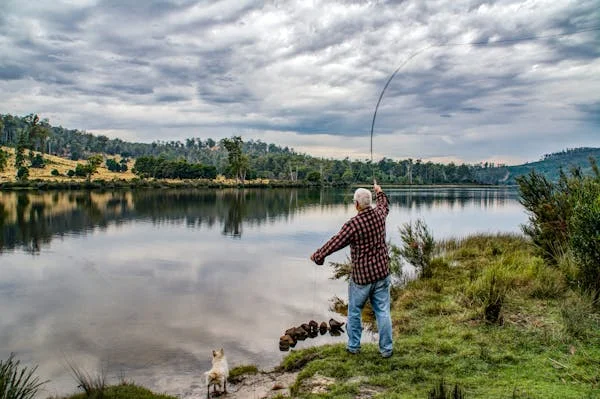Introduction
On that fateful afternoon, two young boys ventured to the edge of the Mississippi River near Harding Boulevard in Baton Rouge. While playing near the water, they were caught in the powerful currents of the river. Despite the best efforts of rescue teams, both boys drowned before they could be saved. The fisher boys drowning in Baton Rouge off Harding Blvd has been a stark reminder of the dangers posed by natural water bodies, especially when there are no safety measures in place. The incident also brought to light the need for better supervision and safety protocols around rivers and lakes.
Contributing Factors to the Fisher Boys Drowning in Baton Rouge Off Harding Blvd
1. The Dangerous Power of River Currents
Why is the Mississippi River So Dangerous?
The Mississippi River is known for its strong and unpredictable currents. Even in areas that appear calm, the currents can shift quickly, posing significant risks to those near the water’s edge. The boys likely did not anticipate the strength of the current, which ultimately led to their tragic drowning.
Key Factors of Dangerous Currents:
- Sudden changes in current speed: Heavy rainfall or upstream changes can cause currents to become unexpectedly stronger.
- Shifting water depths: Shallow areas near the riverbank can quickly drop into much deeper waters, making it difficult to escape.
- Hidden debris: Logs and other debris in the water can make swimming or escape more dangerous.
The fisher boys drowning in Baton Rouge off Harding Blvd could have been avoided if they were aware of the danger posed by the currents or if safety measures had been in place to restrict access to risky areas.
2. Lack of Safety Measures Near the River
How Did Safety Failures Contribute to the Incident?
In addition to the strong currents, the lack of safety measures in the area was a significant factor in the tragedy. The riverbank near Harding Blvd was not properly marked with warning signs, and there were no physical barriers to prevent children from getting too close to the water. Furthermore, no lifeguards or emergency personnel were present to respond to the incident quickly.
Key Safety Failures:
- Absence of warning signs: Visitors were not informed about the risks of the river’s current or the potential dangers of playing near it.
- No lifeguards or emergency responders: In case of an emergency, there was no one present to respond quickly to save lives.
- Lack of fencing or barriers: There were no barriers to prevent children from accessing the most dangerous parts of the riverbank.
This lack of preventative measures in the area highlights the need for better infrastructure and supervision at locations near water bodies, particularly in high-risk areas like the Mississippi River.
How to Prevent Future Tragedies: Key Safety Measures
1. Improved Supervision and Adult Presence
Why is Supervision Vital in Preventing Drownings?
Supervision is one of the most critical factors in preventing drowning incidents, especially when children are near water. In the case of the fisher boys drowning in Baton Rouge off Harding Blvd, the tragedy could likely have been avoided with adult supervision.
Supervision Tips:
- Stay within arm’s reach: Always ensure that children are supervised closely when near water.
- Don’t leave children alone, even briefly: Even a few moments of unsupervised time near water can lead to a tragic outcome.
- Train adults in water safety: Supervising adults should be familiar with water safety practices and know how to respond in case of an emergency.
Proper supervision could have saved the lives of the two young boys who tragically drowned in Baton Rouge.
2. The Importance of Life Jackets and Safety Gear
How Can Life Jackets Help Prevent Drownings?
Life jackets are one of the simplest yet most effective tools for ensuring safety in and around water. They provide buoyancy and help individuals stay afloat, even if they are caught in strong currents like those in the Mississippi River.
Why Life Jackets Are Essential:
- Provide buoyancy: Life jackets help keep individuals above water, even if they are tired or overwhelmed.
- Reduce the risk of drowning: By keeping children afloat, life jackets can significantly lower the risk of drowning.
- Peace of mind for parents and guardians: Life jackets can offer comfort to adults, knowing their children are safer near water.
If the fisher boys drowning in Baton Rouge off Harding Blvd had been wearing life jackets, it might have given them a better chance of survival, even in the face of the powerful currents.
3. Water Safety Education and Awareness Campaigns
Educating the Community on Water Safety
Water safety education is crucial for preventing drownings. Children and adults alike need to be aware of the risks associated with natural bodies of water, and they should learn essential water safety practices. Communities can benefit from programs that teach about the importance of wearing life jackets, recognizing dangerous currents, and knowing what to do in case of an emergency.
Key Aspects of Water Safety Education:
- Teaching children to recognize dangerous currents and how to stay safe near water.
- Encouraging swimming lessons and water safety training.
- Distributing informational materials about water hazards and safety.
Public awareness campaigns can go a long way in reducing the number of drownings and ensuring that people understand the risks associated with water recreation.
4. Installing Safety Infrastructure: Signs, Barriers, and Warning Systems
How Can Infrastructure Help Prevent Drownings?
One of the most effective ways to prevent drownings is by improving safety infrastructure around bodies of water. Simple measures like warning signs, lifeguard stations, and barriers can make a significant difference in reducing drowning incidents.
Infrastructure Improvements to Consider:
- Warning signs: Install clear signage along the riverbanks, warning visitors of the dangers posed by strong currents.
- Lifeguard stations: Having lifeguards present at popular water recreation spots can provide a quick response to emergencies.
- Physical barriers: Fencing or other barriers can prevent people from accessing high-risk areas near the riverbank.
- Emergency equipment: Providing easy access to emergency flotation devices or rescue equipment can aid in quick rescues.
These infrastructure changes could have made a significant difference in the fisher boys drowning in Baton Rouge off Harding Blvd incident, potentially saving lives.
The Role of the Community in Preventing Drownings
Local Authorities and Governments
Local governments play a vital role in ensuring public safety near bodies of water. Authorities must take steps to improve infrastructure, enforce safety regulations, and implement water safety programs to protect residents.
How Local Authorities Can Help:
- Enforce safety regulations: Ensure that all water access points are properly regulated and equipped with necessary safety measures.
- Fund water safety programs: Support educational campaigns and training programs aimed at improving community water safety.
- Work with emergency services: Ensure that local emergency responders are trained and equipped to handle water rescues.
Schools and Educational Institutions
Schools can serve as key players in spreading water safety education. By integrating water safety lessons into the curriculum and hosting safety awareness events, schools can help children and their families learn about the dangers of water and how to stay safe.
Ways Schools Can Contribute:
- Include water safety education in the curriculum.
- Organize water safety workshops and activities for students and families.
- Collaborate with local authorities to promote safety measures near water.
Parents and Guardians: The First Line of Defense
Parents and guardians are the first line of defense in ensuring children’s safety near water. They must actively supervise their children, provide life jackets, and teach them essential water safety skills.
Tips for Parents:
- Teach children basic swimming skills and water safety practices.
- Supervise children at all times when near water.
- Ensure children wear life jackets when engaging in water-related activities.
Conclusion
The fisher boys drowning in Baton Rouge off Harding Blvd is a heartbreaking tragedy that highlights the risks associated with playing near rivers and other natural bodies of water. However, this tragedy also serves as an important reminder of the need for better water safety education, improved supervision, and stronger infrastructure to protect those who frequent these areas.
By taking proactive steps, such as enforcing safety regulations, providing education, and ensuring that water recreation areas are properly equipped with safety measures, we can reduce the risk of drowning incidents in the future.
As a community, we must come together to prioritize water safety and work toward creating environments that protect lives and prevent further tragedies like the fisher boys drowning in Baton Rouge off Harding Blvd.
FAQs
What happened in the Fisher Boys drowning incident?
On September 12, 2024, two young boys tragically drowned after being swept away by strong currents in the Mississippi River near Harding Blvd in Baton Rouge.
What caused the drowning of the fisher boys?
The incident occurred due to the powerful and unpredictable currents of the Mississippi River, compounded by the lack of safety measures near the water’s edge.
How can we prevent future drownings in similar situations?
Future drownings can be prevented by ensuring better supervision, using life jackets, promoting water safety education, and installing safety infrastructure like warning signs and barriers.
What safety measures should be in place near rivers?
Near rivers, safety measures should include clear warning signs, lifeguard stations, barriers to prevent access to dangerous areas, and easily accessible emergency equipment.
How can parents ensure their children are safe near water?
Parents should supervise children closely, ensure they wear life jackets, educate them about water safety, and emphasize the dangers of strong currents to prevent potential drownings.






